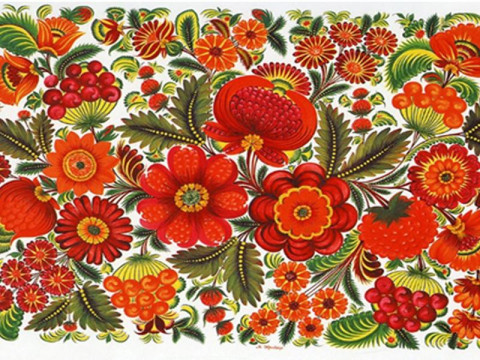Petrykivka painting is a traditional Ukrainian decorative painting
style, originating from the village of Petrykivka in Dnipropetrovsk oblast of
Ukraine, where it was traditionally used to decorate house walls and everyday
household items. The earliest known examples of this style date from the 18th
century, but it continues to thrive and develop as a modern art form.
Petrykivka painting is traditionally
dominated by plant forms, particularly of flowers. At times, they are depicted
as abstracted shapes that do not necessarily correspond to any recognizable,
naturally occurring plant species. In other cases, they are based on common
garden flowers, wildflowers and other plants. Acanthus leaves (traditionally
referred to as «ferns» and flower buds are also commonly seen. The plant imagery is often
combined with birds, and sometimes with images of animals and people, which are
often depicted in somewhat fanciful form. Designs also commonly make use of the
image of a phoenix or firebird.
Petrykivka painting makes use of four characteristic brush strokes:
«Hrebinets’» (Comb) – a brush stroke that begins with a heavier
pressure and thick line, then finished with a lighter touch and thin line. So
called because a series of such strokes look like a hair comb.
«Zerniatko» (Seed) – abrush stroke that is the reverse of the «hrebinets’», with initial light
and final heavy pressure. When such strokes are used on either side of a stem,
the result resembles an ear of wheat.
«Horishok» (Nut) – consists of two «hrebinets’» strokes that are
curved and placed next to each other. Filling the resulting central negative
space with a «zerniatko» stroke produces a form similar in shape to a
hazelnut.
«Perekhidnyimazok»
(Transitional stroke) – made by a single brush with two differently coloured
pigments. A dry brush is dipped first into one (e.g., green) and then another (e.g.,
yellow) paint. The result is a line of yellow paint, which gradually turns into
green.

